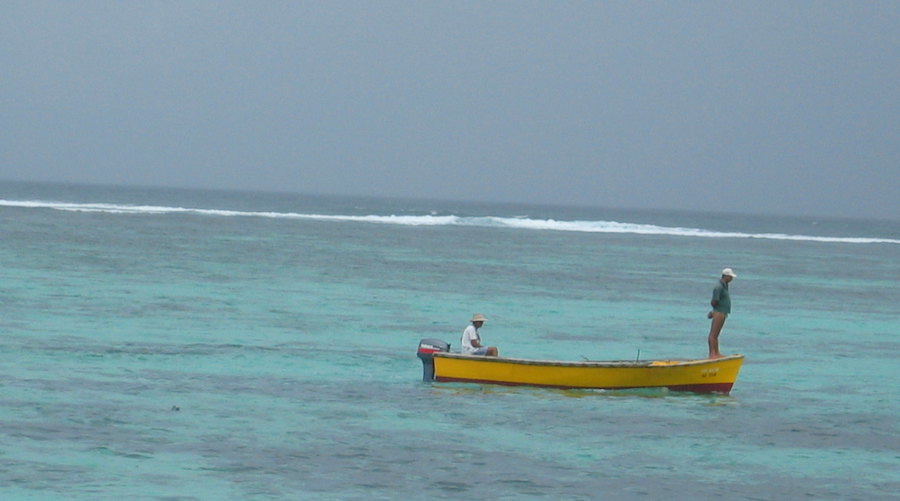
Men fishing in Seychelles. Photo by Tiare Scott, Flickr.
Comprehensive fisheries data are needed in the Republic of Seychelles to back the country’s path towards a blue economy, where environmentally sustainable and equitable practices are implemented to make use of various ocean resources for economic growth.
New research by the Sea Around Us – Indian Ocean, in collaboration with Hanna Jabour Christ of the Marine Futures Lab at the University of Western Australia, revealed that there are discrepancies between the actual quantities and species of fish caught in the Seychelles Exclusive Economic Zone and what is being reported by regulatory agencies and the Food and Agriculture Organization of the United Nations.
“We reconstructed the total domestic catch for the archipelago and found that it was 1.5 times higher than the baseline reported by FAO on behalf of Seychelles from 1950 to 2017,” Hanna Christ, lead author of the study, said. “Domestic catches, here excluding large-scale industrial pelagic catches taken mostly by foreign companies for international markets, increased by over 500% throughout the time period, growing from less than 2,000 tonnes per year in the 1950s to over 11,000 tonnes in 2017.”

Fishing in Seychelles. Photo by Gerard Larose, Wikimedia Commons.
Using official catch statistics and complementing them with best available time-series estimates of all unreported fisheries sectors using secondary data from the peer-reviewed and grey literature, Christ and her colleagues filled in the gaps in commercial fisheries data, that is, catches by the semi-industrial and artisanal fishing fleets. They took into consideration, for example, fish that are discarded at sea.
Besides discards, which were mostly the responsibility of the semi-industrial sector at 1,700 tonnes between 1995 and 2017 or 17 per cent of its landings, they also registered how much was taken by artisanal fishers for their own home-consumption and by sport fishers.
“Despite commendable efforts by the Seychelles Fishing Authority to improve catch statistics by collecting information from different fishing sectors, non-commercial fisheries -that is, recreational and subsistence- were consistently not included in the national reports,” Dirk Zeller, co-author of the study and director of the Sea Around Us – Indian Ocean, said. “The fact to take into consideration is that these unreported sectors represented nearly 10 per cent of the entire domestic catch in 2017.”
Based on their analyses, the researchers believe catches from these sectors have the potential to increase given the economic opportunities associated with the sport fishery. They also highlight the fact that subsistence home-consumption catches taken by artisanal fishers are an integral health, livelihood and food security component of these communities where at least one in 10 households are commercial fisher households.
The rise in catches, however, could come at a high price, and that is a potential decline in relative abundance of fish populations in a country highly dependent on ocean resources.
“Using the reconstructed catch data, we calculated total fishing effort and noticed that despite fishers switching their pirogues for motorized vessels and spending more time at sea, they have been catching less since the 1980s,” Hanna Christ said. “In a country like Seychelles, having an assessment of the health of fish populations is critical for fisheries management.”
In the view of the authors, making sure that comprehensive data are collected and reported is key for socio-economic reasons but also because, back in 2018, Seychelles launched the world’s first sovereign blue bond —a financial instrument designed to support sustainable marine and fisheries projects and which raised $15 million from international investors.
The paper “A Baseline for the Blue Economy: Catch and Effort History in the Republic of Seychelles’ Domestic Fisheries” was published in Frontiers in Marine Science 7:269 doi:10.3389/fmars.2020.00269


